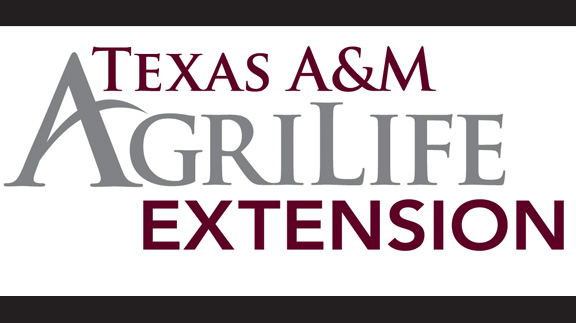Farm & Ranch
[AgriLife Today] Cattle, wheat pricing highlight July 26 conference in Wichita Falls

By: Kay Ledbetter
Writer: Kay Ledbetter, 806-677-5608, [email protected]
Contacts: Stan Bevers, 940-552-9941, [email protected]
Marty New, 580-255-0546, [email protected]
WICHITA FALLS – The Cattle Trails Wheat and Stocker Cattle Conference July 26 will cover how producers can meet pricing challenges in 2016 and prepare for 2017.
The conference, sponsored by the Texas A&M AgriLife Extension Service and the Oklahoma Cooperative Extension Service, will be from 8 a.m. to 3 p.m. at the MPEC Event Center, 1000 Fifth St., Wichita Falls.
Registration is $25 per person and includes educational materials, a noon meal and refreshments.
The information will be directed at producers in Southwestern Oklahoma and the North and Rolling Plains regions of Texas, said Stan Bevers, AgriLife Extension agricultural economist at Vernon.
Bevers said important changes are coming to the way producers manage their cattle due to the Veterinary Feed Directive regulation from the Food and Drug Administration.
“This regulation becomes effective January 2017 and will require the producer to have a valid veterinarian-client-patient relationship,” he said. “If a producer does not have a veterinarian, now is the time to begin finding one. Stocker cattle that will be purchased this fall could be covered under this regulation.”
The afternoon portion of the conference will focus on the specifics of the Veterinary Feed Directive and how a producer’s operation will change due to it.
Producers are encouraged to preregister by contacting their local AgriLife Extension county agent, their Oklahoma Cooperative Extension county educator or Allison Ha at the Texas A&M AgriLife Research and Extension Center near Vernon at 940-552-9941, ext. 225 or [email protected].
Speakers and their topics will include:
– Wheat Variety Update for the Southern Great Plains, Dr. Emi Kimura, AgriLife Extension agronomist, Vernon.
– Wheat and Cattle Market Outlooks: What’s Working and What’s Not, Bevers.
– Balancing the Scales: Efficiency, Profitability, Technology, Consumerism and the
Environment, Dr. Chris Richards, Oklahoma State Extension and research beef cattle nutrition specialist, Stillwater, Oklahoma.
– An Overview of the Veterinary Feed Directive: Facts and Fiction, Dr. Tom Hairgrove, AgriLife Extension program coordinator for livestock and food animal systems, College Station.
– Living with the Veterinary Feed Directive: How Will My Cattle Operation Change?, Dr. Ron Gill, AgriLife Extension livestock specialist, College Station.
Industry sponsors will have products on display during the event.
For more information, go to http://agrisk.tamu.edu.
-30-
Find more stories, photos, videos and audio at http://today.agrilife.org
Farm & Ranch
Ag Elsewhere: Wyoming

By Tressa Lawrence
Babies are tucked away in every nook and cranny. Many ranchers across Wyoming have baby animals popping up all over this time of year.
Farm & Ranch
Ag Elsewhere: Montana

By Lindsey Monk
Another load of grain in to keep feeding the calves until the green grass can really start popping.
Farm & Ranch
Meanwhile, Back at the Ranch….

By Rayford Pullen | [email protected]
Spring has sprung and hopefully the rains will continue where our country will heal from the previous droughts and our grasses will thrive. We are especially hopeful for the Panhandle of Texas where our neighbors and friends have been dealt a deadly blow to homes, ranges, livestock, and people. Keep them in your prayers as they will not be able to return to normal for many years if at all. Having lost their ability to benefit from this great cattle market is a double whammy for all of them.
Now is the time of year when we need to take care of business as it relates to our new calves that have been hitting the ground this spring. First and foremost is vaccinating for Blackleg followed by deworming with a white wormer and the IBR complex. Blackleg is a soil-born disease and with pastures extremely short this spring our calves have been grazing the green grass as soon as it shows itself, making them even more vulnerable to picking contaminates from the soil.
To read more, pick up a copy of the April issue of NTFR magazine. To subscribe by mail, call 940-872-5922.
-

 Country Lifestyles1 year ago
Country Lifestyles1 year agoScott & Stacey Schumacher: A Growth Mindset
-

 Equine7 months ago
Equine7 months agoThe Will to Win
-

 Country Lifestyles7 years ago
Country Lifestyles7 years agoStyle Your Profile – What your style cowboy hat says about you and new trends in 2017
-

 Country Lifestyles4 years ago
Country Lifestyles4 years agoAmber Crawford, Breakaway Roper
-

 HOME7 years ago
HOME7 years agoGrazing North Texas – Wilman Lovegrass
-

 Country Lifestyles7 years ago
Country Lifestyles7 years agoDecember 2016 Profile, Rusty Riddle – The Riddle Way
-

 Country Lifestyles8 years ago
Country Lifestyles8 years agoJune 2016 Profile – The man behind the mic: Bob Tallman
-

 Country Lifestyles8 years ago
Country Lifestyles8 years agoCowboy Culture with Clay Reid – Being a Man






